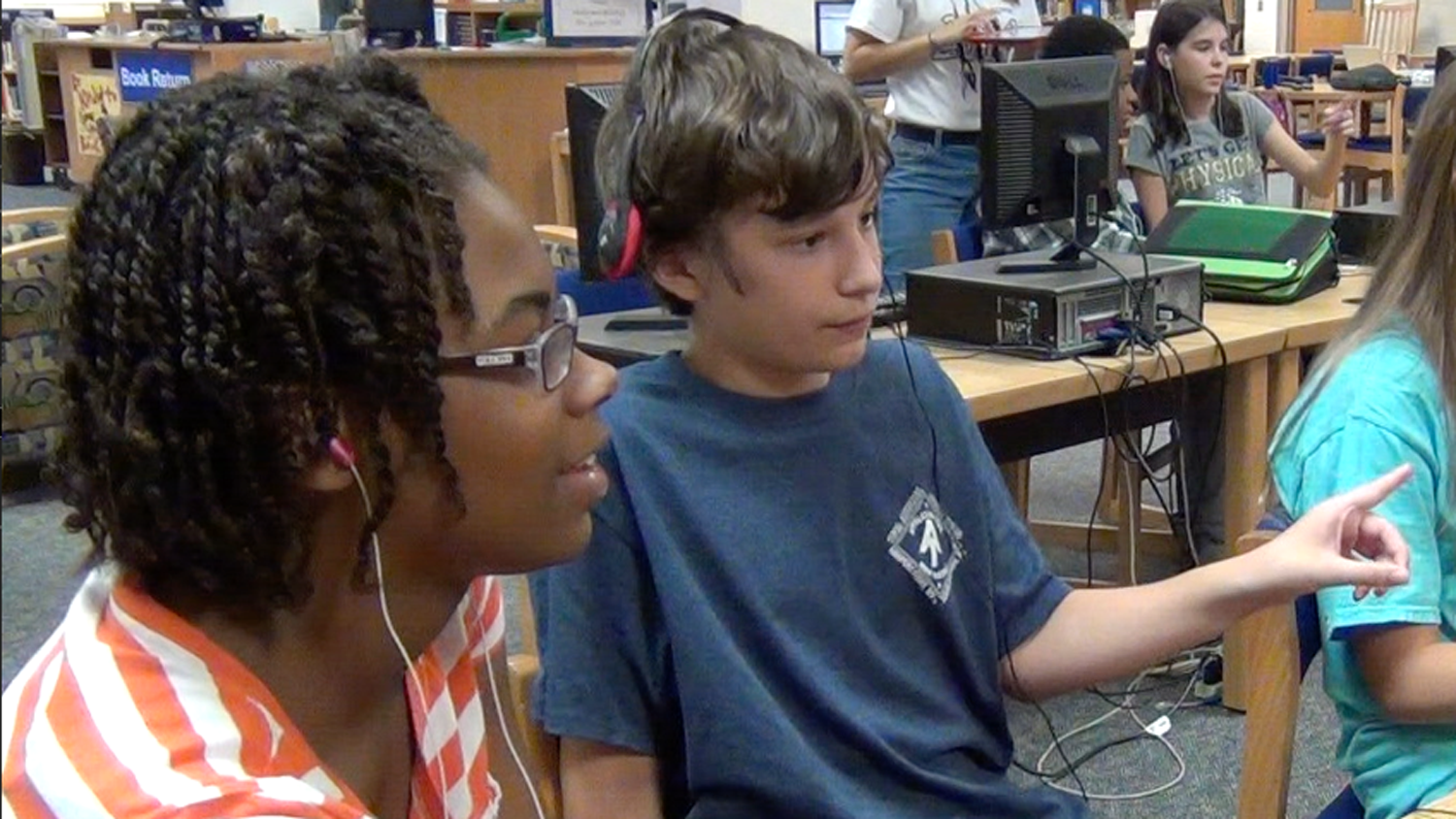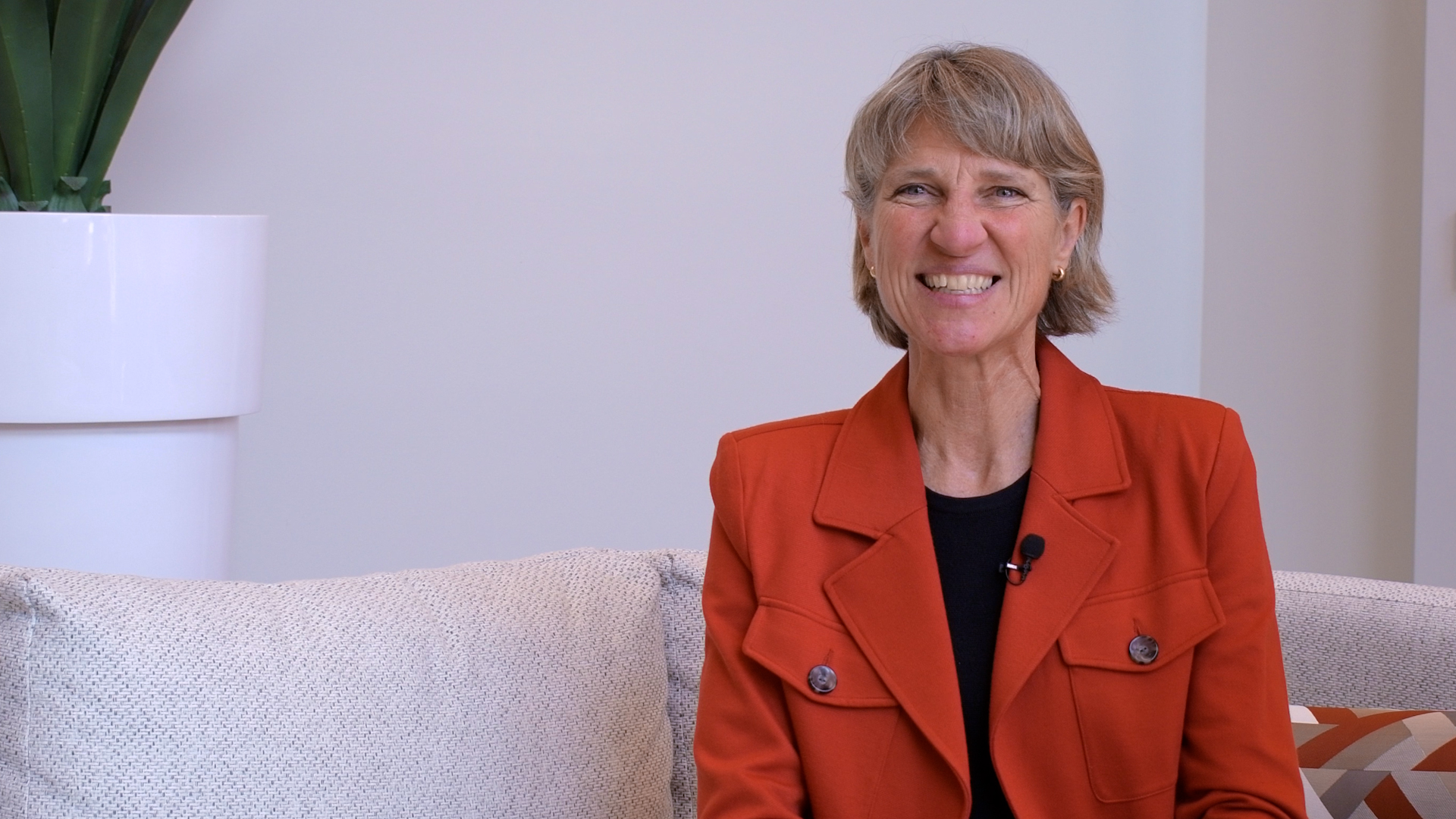Engaging in Computer Science

College of Education faculty change the way students learn through classroom innovation. That’s exactly what Dr. Eric Wiebe does through ENGAGE, a game-based learning environment that gets middle school students involved in computer science.
“We used to think that classrooms were just for ‘serious’ endeavors, and that games were something that happened on the playground at recess,” said Wiebe, a professor in the Science, Technology, Engineering and Math (STEM) Education Department. “That all changed with the advent of video consoles and smartphones, and we’re trying to leverage what is so enticing about games to impact how students learn in the STEM fields.”
Dr. Wiebe created ENGAGE in collaboration with the Center for Educational Informatics and James Lester, Distinguished Professor of Computer Science at NC State; Brad Mott, senior research scientist in the Department of Computer Science; and Christy Boyer, an associate professor at the University of Florida. The team recently received funding for a second round of project research from the National Science Foundation’s (NSF) STEM+C initiative, which promotes computer science education in K-12 classrooms.
The initial ENGAGE project took game- and classroom-based activities focused on computer science and integrated them with a middle grades oceanography science curriculum. The game-based activities features a dynamic narrative and characters, and involves students in problem-solving activities to achieve computer science learning objectives.
Research focuses on benchmarking how effective ENGAGE game-based learning is in strengthening students’ computer science skills and interest, especially for students in underrepresented groups. The program is being implemented in middle schools across Wake County.
“With ENGAGE, we’re particularly interested in this integration of computer science education from the standpoint of figuring out how we put powerful computing tools in the hands of middle school students,” said Wiebe. “We want to develop rich and engaging curricula to supercharge opportunities in computer science for these students, and ENGAGE brings this to life through game-based classroom learning.”
As part of ENGAGE, middle school students play a game where they seek to retake control of an undersea research station commandeered by an archnemesis intent on polluting ocean water. They work in pairs, which a broad base of educational research suggests is productive for effective learning.
“So many rich educational opportunities come to light when you design problem-based learning games that allow students to collaborate,” said Wiebe. “They are able to leverage the collective cognitive abilities to not only solve problems, but also learn from and support one another, and to motivate and encourage one another in educational pursuits, which include computer science.”
Of course, the computer programming and coding involved in ENGAGE gameplay extends beyond the game itself. Wiebe and his collaborators developed classroom activities to help students transfer what they’ve learned through the game to see how computational thinking and computer science can be used in the middle school science classroom.
The game and other activities develop STEM-related knowledge and skills in students, and address issues of classroom equity and diversity. The game integrates a narrative structure, choices of strong female characters, and activities and challenges that have proven appealing to girls just as much as boys, who have often been the primary audiences for both computer games and computer science activities.
“One of the issues that we want to address is that there are too few women and underrepresented minorities in computer science at all levels,” said Wiebe. “We feel that the way we have structured the game – creating a life-affirming environment that engages all players – can greatly impact views of women and minorities when it comes to computer science, and can instill a lifelong love of this type of learning in all students.”
In the current phase of ENGAGE, the team will look at extending both the computer game- and classroom-based activities to provide students with further coding, programming and related computational thinking activities. Wiebe and his collaborators seek to give 5,000 middle school students access to ENGAGE in seventh and eighth grade science classes, and extend the current two weeks worth of game play curricular activities to at least four weeks.
“The feedback we’ve received from teachers and students participating in ENGAGE has been very positive, which reinforces our commitment to the project and our belief that this is an incredibly exciting time to be involved in STEM and computer science education,” said Wiebe. “What kids are capable of when they work and learn together through game-based activities is inspiring. When they grow up, regardless of their chosen career, they will likely use computing tools and computational practices, and we are helping prepare them for the future through ENGAGE.”
- Categories:


